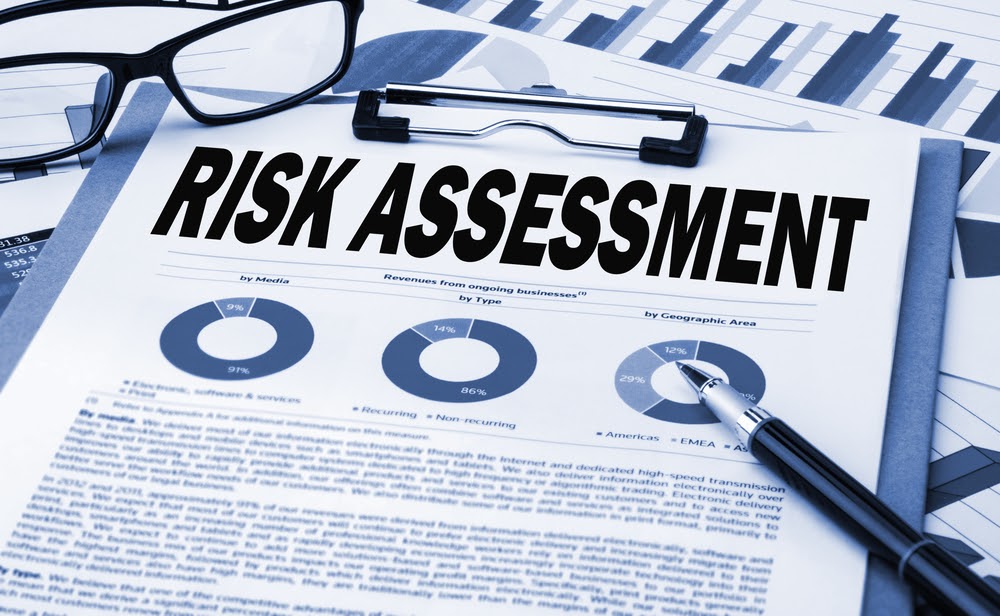Risk assessments aren’t just a legal requirement; they play an essential role in the health and safety of your workplace. By identifying risks and creating awareness of hazards, you can recommend and implement effective safety measures to protect workers — and potentially — members of the public from harm.
But despite the importance of risk assessments, many companies make mistakes when completing them. These mistakes can lead to hazards going unnoticed and proper safety measures not implemented. As a result, erroneous risk assessments can lead to workplace injuries and ill-health.
So to help you mitigate risks and create a safe working environment for your employees, here are five risk assessment mistakes you need to avoid.
1: Not Involving Employees
When carrying out risk assessments, you’re required by law to consult your workforce. Your staff will be more familiar with the workplace than anyone else and having experienced hazards first hand, they can identify hazards, the risk they pose and may be able to offer solutions you might not have thought of.
Including employees in health and safety discussions can also encourage staff to consider hazards and risks while working. Staff may also be more productive and motivated if they feel included in discussions, and if they know their personal health and safety is taken seriously.
2: Not Regularly Revising Risk Assessments
Even if you carry out the most thorough risk assessment, it won’t remain relevant forever. Regularly review risk assessments. Any time new hazards are introduced to the workplace, you’ll need to revise your risk assessments. For example, if you acquire new equipment, materials or chemicals, or if you adopt a new way of going about tasks, you’ll need to amend your risk assessment to include new hazards and risks. You’ll also be required to update your risk assessments if new health and safety regulations or guidelines are introduced.
3: Failing to Communicate the Risk Assessment Findings
Risk assessments help you implement safety measures that will protect your workers (and others) from harm. But if you don’t communicate the findings of risk assessments, your staff may not be aware of hazards or the actions they need to take to protect themselves.
You should communicate new risk assessments or changes to existing risk assessments to staff on all levels of your company. Employees should have access to risk assessments and other health and safety information so they can easily check the company policies and safety measures that need implementing.
4: Forgetting Long Term Health Risks
When identifying hazards in the workplace, it’s easy to focus solely on hazards that can cause accidents and injuries. These dangers may be easier to spot — for example, trip hazards, sharp edges, and live electrics can all be visually identified and located with a quick walk around the workspace.
However, long term health risks need to be taken just as serious as hazards that can cause immediate injury. The trouble is, it can be more difficult to identify the causes of health issues.
Ways to identify health hazards include looking back over accident and ill-health records. If there’s a pattern of any health issues, this can help you identify the cause. Manufacturers instructions for equipment or products can also indicate potential risks, so it’s worth checking these.
You should also consider activities or equipment that workers carry out daily. These might not have any immediate ill-health effects, but prolonged exposure, for example to high noise levels, dust or harmful materials such as asbestos, can cause long-term health issues.
5: Failing to Implement Control Measures
Taking action to implement safety measures is the most important part of your risk assessment. Just completing risk assessment documentation isn’t enough to safeguard your workers. It’s the action you take, using the findings of your risk assessment, that will improve the health and safety of your workplace.
Even if you already have control measures in place, your risk assessment will require you to take action of some sort. This may be checking your existing safety measures are effective, and maintaining them — or you may need to apply new control measures.
Act on every recommendation in the risk assessment, and implement all suggested safety measures. Such action will protect your business from legal liability and will help you drastically reduce the risk of workplace injuries and ill-health.
Author Bio: Jolene Osei
Jolene Osei is an experienced and qualified SHEQ Audit Manager at CHAS, the UK’s leading health and safety assessment scheme and provider of risk mitigation, compliance and supply chain management services. Jolene has worked with businesses in the public and private sector. She is committed to helping companies comply with health and safety regulations, improve risk management strategies, and increase supply chain efficiency.
